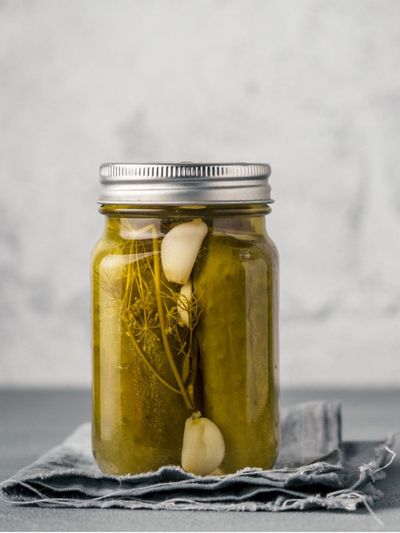History of Vinegar Pickling
Vinegar has a lengthy history, traces of it have been found in Egyptian urns from about 3000 B.C. It was originally a sour liquid made from the fermentation of wine and, as such, referred to as “poor man’s wine.” The word vinegar is also derived from the Old French ‘vinaigre,’ meaning sour wine. Using vinegar for food preservation likely came about in northwest India around 2400 B.C. It arose as a simple way to preserve food for long journeys and export. This was the first recorded use of vegetables and vinegar, pickling cucumbers.
About Preserving with Vinegar
When you preserve vegetables with vinegar you end up with a food that can be preserved for long periods of time using simple ingredients. The science of using vinegar for food preservation is simple. The acetic acid contained in the vinegar increases the acidity of the vegetables, killing off any microorganisms and effectively preserving the veggies by preventing spoilage. There are limitations to vinegar pickling, however. The vinegar matters. While most people use distilled white vinegar because it won’t discolor the veggies, other types of vinegar can be used such as apple cider vinegar, which has a pronounced flavor. What is terribly important about the acetic content? The vinegar must have a content of five percent acetic acid and should never be diluted. The acetic acid is what is killing off any bacteria and preventing botulism.
How to Preserve Vegetables with Vinegar
There are hundreds of pickling recipes out there. Once you pick one, follow the instructions. Beyond a good recipe, there are other things to consider. Use stainless steel, enamelware, or glass of food-grade plastic. Never use copper or iron which will discolor your pickles. Make sure your jars have no cracks or chips. Use a candy or meat thermometer to test the water temperature. If your recipe calls for a water bath, you need a water bath canner or deep kettle that will allow the jars to be covered with water. You will also need a rack or folded tea towels for the bottom of the kettle. Use the freshest, unmarred produce. A bit under-ripe is best, so the produce holds its shape. Use only fresh spices. Any food-grade salt can be used but not salt substitute. If called for, use granulated or beet sugar, never brown sugar. If using honey, use ¼ less. Some recipes call for alum or lime, but they aren’t really necessary although lime will impart a nice crispness. Lastly, if all this seems too much trouble for a pickle, quick pickles that keep for a few days in the fridge can be made as well. Try slicing daikon radish or a firm English cucumber very thinly and then submerge it in rice vinegar, salted and sweetened with granulated sugar, and crushed red pepper flakes to taste, depending on how hot you want it. Within a couple of hours, you have an excellent pickled condiment to use with fish or other dishes.
